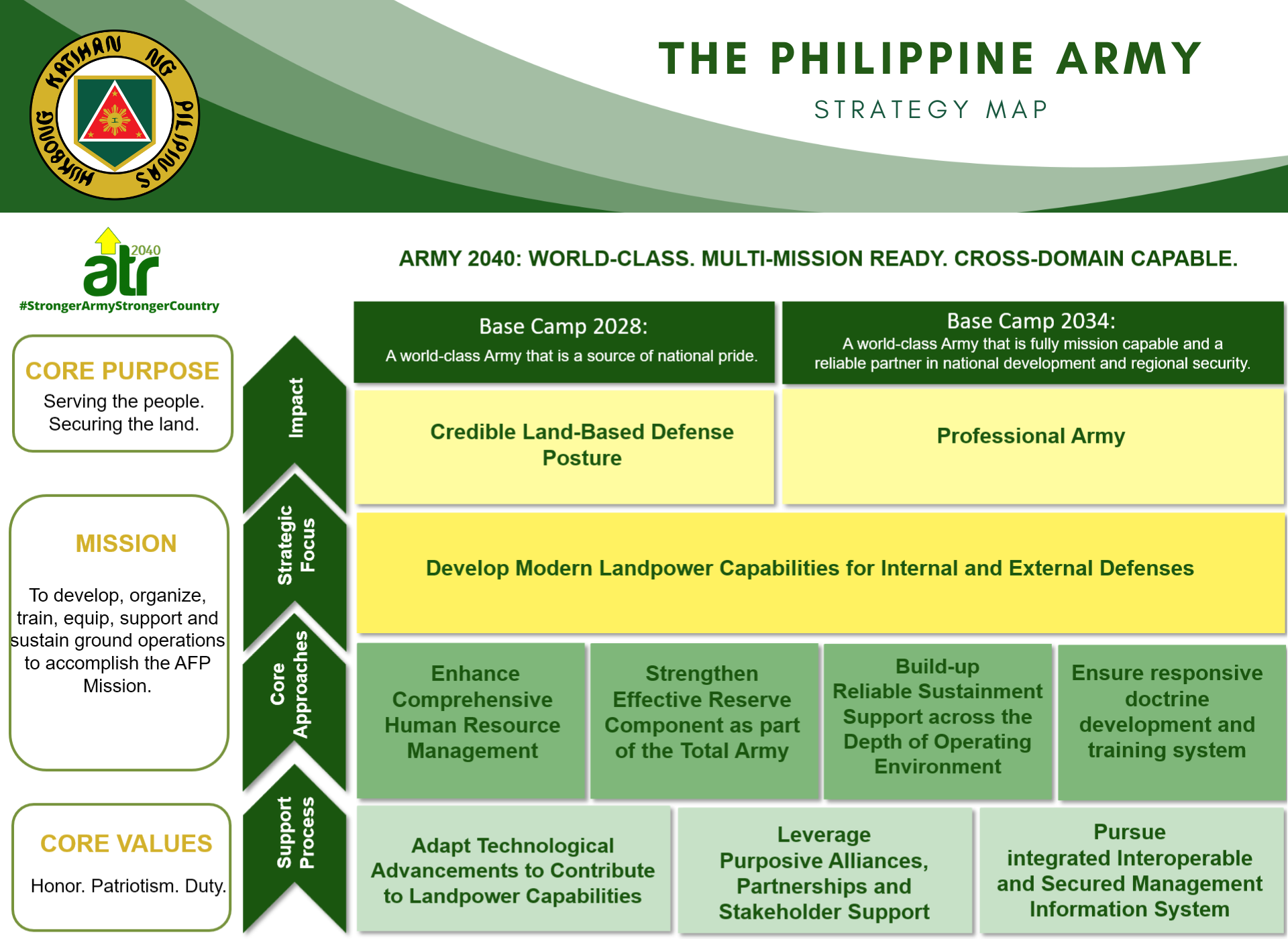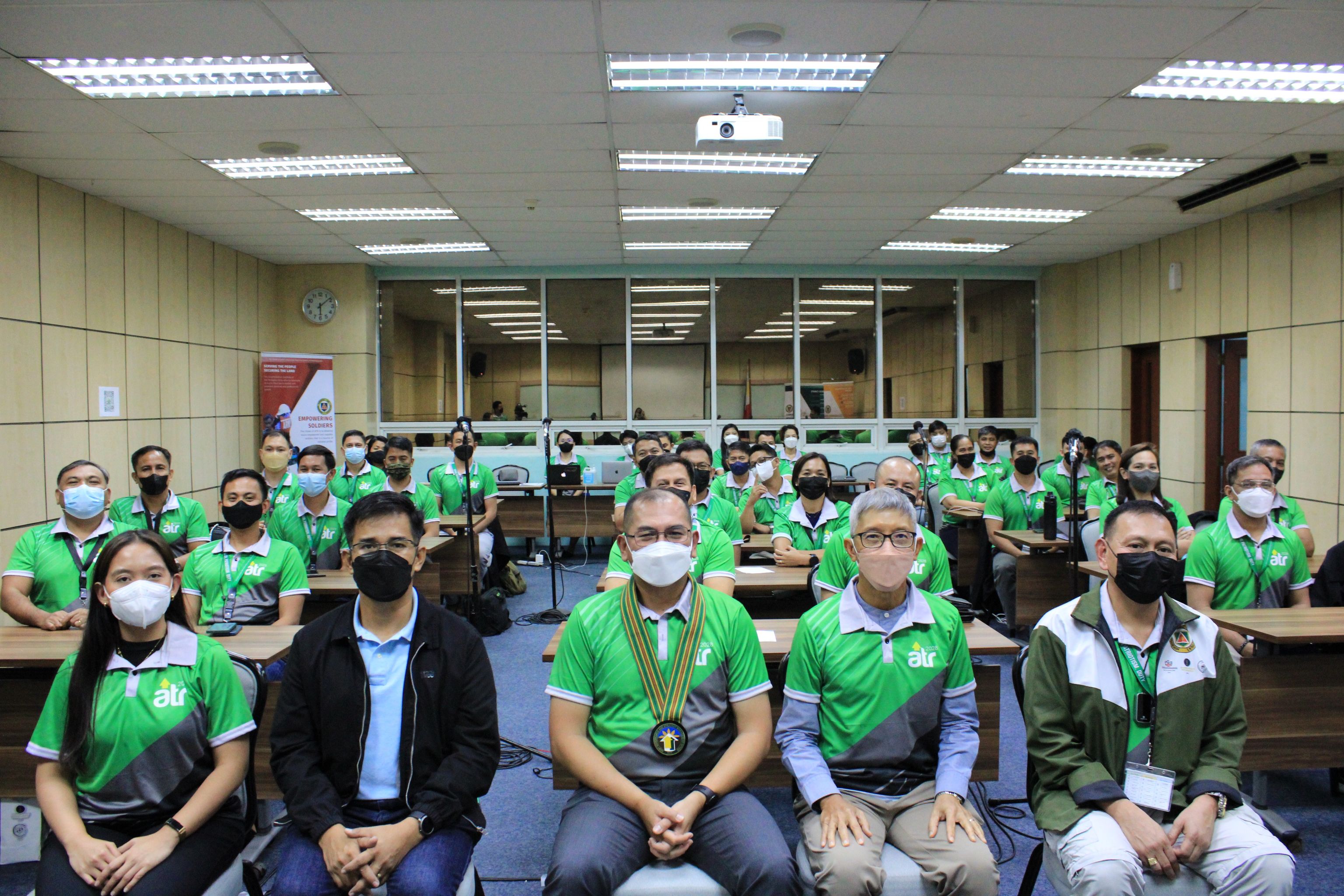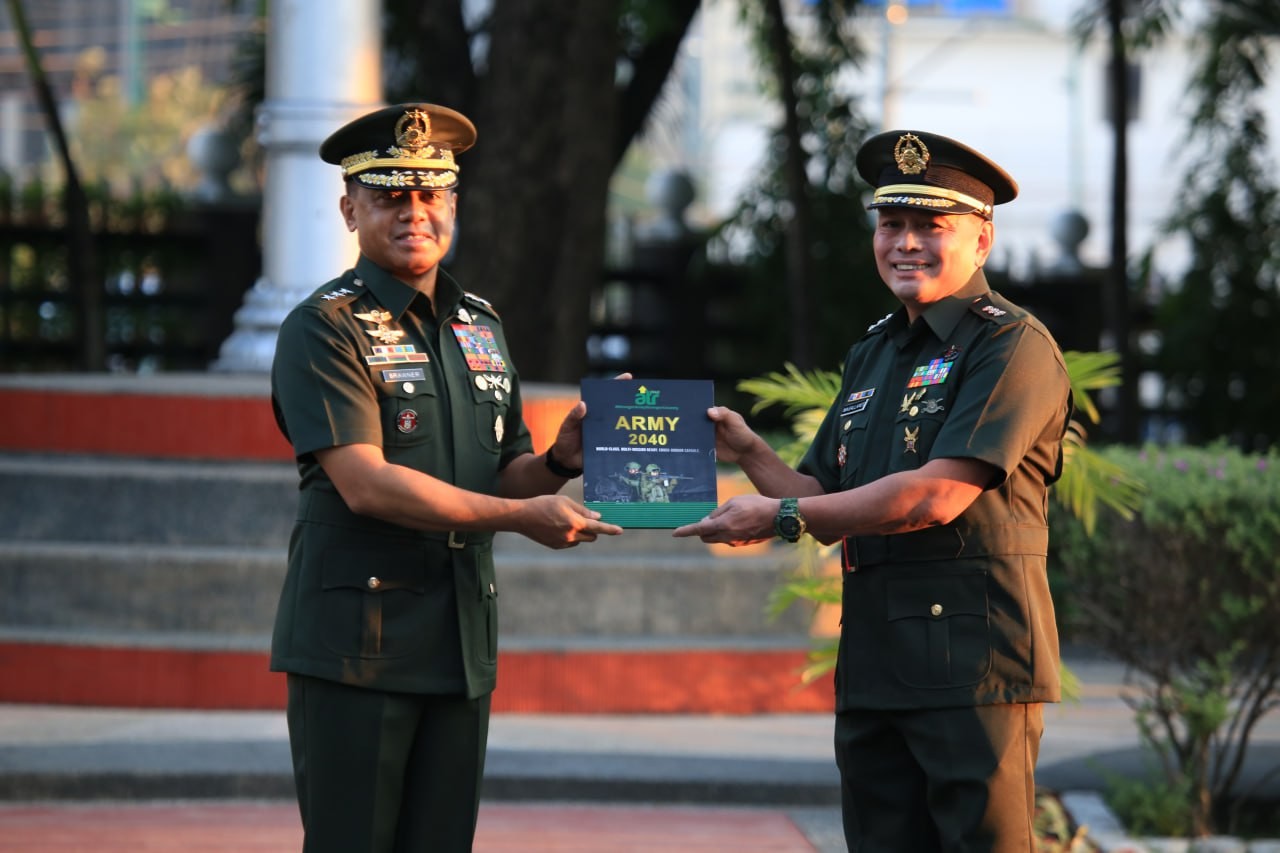STRATEGY REFRESH AND BASECAMP ASSESSMENT
The Army Transformation Roadmap (ATR), which was officially launched on 19 July 2010, is the embodiment of the Philippine Army’s aspiration to transform itself into a world-class Army that serves the Filipino people and secures the land. It is an 18-year strategic plan with reform initiatives intended to set a strategic direction for the Philippine Army (PA) to achieve its vision of becoming a world-class Army that is a source of national pride by 2028. Since its launching, the ATR underwent four Strategy Refreshes and Basecamp Assessments: the first was in 2010, after nearly six months from its launch where the intermediate goal for 2013 of “a disciplined and motivated army capable of addressing all internal security threats” was established (AGSMO, ATR 2028, 2010). In 2013, during its ATR Basecamp Assessment, the PA was able to achieve the said intermediate goal (AGSMO, 2013). It then set an intermediate goal for 2016, which was to become “a well-equipped Army that has established a respectable image in Southeast Asia.” The 2016 ATR Basecamp Assessment manifested that the PA was able to partially achieved such strategic goal (AGSMO, 2016). That year’s ATR Strategy Refresh also set an intermediate goal for the PA of becoming a “modern and respectable Army in Asia by 2022.” The fourth Strategy Refresh and Basecamp Assessment, which was held in 2022, identified the program’s gaps and needs in order to keep abreast of the PA’s vision. The 2022 ATR Basecamp Assessment also indicated the PA’s low performance in accomplishing the original intents of the 13 Strategic Objectives set forth during the 2016 ATR Strategy Refresh. Various factors including the COVID-19 Pandemic attributed to these low performance indicators that affected the attainment of the PA’s 2022 intermediate goal (AGSMO, 2022).
Nevertheless, this year’s ATR Strategy Refresh paved the way to consider an alternative approach, the Strategic Thinking Process (Carolin, 2013), that complemented the Performance Governance System or PGS AGSMO, ATR 2028, 2010) in crafting the strategic objectives for the ATR. The PGS which is an adaptation of Harvard’s Balanced Scorecard Approach has been used by the PA since 2010 as a framework to transform itself into a strategy-focused organization. It “ensures clear linkages to be established between the strategic objectives of the ATR and the actions and decisions of our leadership” (Army, 2003). The Strategic Thinking on the other hand, which was facilitated by a third-party consultant, the Singapore-based firm, Reyes-Tacandong & Co. Strategic Processes, Inc. headed by Dr. Ho Sun Yee, offered “a thought process used by our leaders to formulate, articulate, and communicate a coherent vision and strategy for the organization” (Carolin, 2013). It guided the PA’s senior leaders and strategic planners involved in the process in developing the PA’s Future Strategic Profile that resulted to the determination of the PA’s Future Driving Force, which is Capability, and the identification of 19 Critical Issues, five of which are Highly Critical (RT Co. SPI, 2022) that the PA should addressed effectively and efficiently in the medium-term in order to realize its vision in 2028. The future driving force and the highly critical issues became the basis in the formulation of the strategic objectives for the renewed ATR that will guide the PA’s capability and organizational developments using the PGS. The PA strategic planners were also able to determine during the Strategy Refresh two common mistakes in the execution of the ATR - the silo mindsets of our Program Directors (PDs) and the misalignment of the ATR to the rolling strategic plans promulgated by our PA leadership. Rectifying these errors by breaking the silo mentalities of the PDs and ensuring its alignment to the PA’s key strategic documents particularly the PA Operating Concept (PAOC), Landpower Maneuver Concept (LMC), Medium-Term Capability Development Plan (MTCDP), Program Objective Memorandum (POM), and the newly-developed Army Strategic Planning Guidance (ASPG) along with other transformation documents published by the two Major Services (PAF and PN) and Higher Headquarters, the refreshed ATR aims to be more responsive, abreast, and realistic in forecasting its future strategic performance and monitoring its past execution.
Hence, the 2022 ATR Strategy Refresh resulted to a more vibrant and vividly redefined vision that sets the PA’s transformation journey not just for 2028 but for another 18-year strategic horizon- ARMY 2040: WORLD-CLASS. MULTI-MISSION READY. CROSS-DOMAIN CAPABLE.
ARMY 2040 VISION
The ARMY 2040 Vision is a clear mental picture of what we wanted our organization should be in the future. The PA could not waste for another 18-year horizon to really attain this vision. Confluence of events may have hampered in the past decade after the ATR was launched to fully achieve the intermediate goals of each basecamp, but the end goal of becoming a world-class Army that is a source of national pride by 2028 is still in the offing and necessitates for us to refocus our time and energy to reach that end goal. Because by attaining that goal in 2028, it will provide the PA the jumping board that will catapult us towards our vision for 2040—World-Class. Multi-Mission Ready. Cross-Domain Capable.
World-Class—the PA adopted this term as our method of internal focusing in order to achieve performance excellence while we sustainably embed the good governance system in our organization. Being a world-class Army means that our organization has adaptive and technology-driven systems and processes that can drive effectiveness and efficiency in producing highly professional and fully-mission capable fighting force with globally-competitive capabilities that can establish a credible land-based defense posture in order to better serve the people and secure the land, like the Singaporean Army.
Multi-Mission Ready—Operational Readiness of PA units to operate in both Internal and External Defense Mission Areas is high and can sustain the Operational Tempo (OPTEMPO) required by the Joint Force of the AFP.
Cross-Domain Capable—The evolution of the security environment into multidomain spectrum necessitates us to transform our land-based capabilities into globally competitive capabilities that are responsive, lethal, survivable, and sustainable for cross-domain operations as part of the Joint Force of the AFP.
PEOPLE, READINESS, AND TRANSFORMATION
Similar to the U.S. Army ATR, our ARMY 2040 Vision consists also of “three interdependent elements that are much more than the equipment we desired to have- People, Readiness, and Transformation” (Army, 2003). We consider our Philippine Army to be composed of People- officers, enlisted personnel, civilian human resource, retirees, and our families. Our people are the central figures of everything we aspire for in our Army Transformation Roadmap. They are our inspiration to pursue the ATR no matter what challenges may lie ahead in our transformation journey. Thus, in everything we plan and do for the ATR, we must always consider the primacy of the role of our people especially the soldiers in pursuing substantively the strategic objectives we set. “Units do not train, they do not stay ready, they do not grow and develop leaders, they do not sacrifice and they do not take risks on behalf of the Nation—people do. Without highly skilled, competent, dedicated people, it does not matter how lethal our weapons are or how strategically responsive our formations grow. The Army is People” (Army, 2003).
As embodied in the PA Program Objective Memorandum 2023-2028, the Readiness Condition (REDCON) of every Key Measurement Area (KMA) in the Medium- Term Force Structure that we desire to come up by 2028 will dictate the status of the capability of our Operational Army. Being the future driving force of the PA, our capability development must be geared towards attaining fully-mission capable rating in all five KMAs coupled with sustainable combined military exercises that will seek to address the different threat scenarios in multi-domain security environment, involving both the Active and Reserve components of the PA. The lessons we learned from the post-World War II wars including that of the ongoing Russia-Ukraine War remind us to consider “perpetuating” rather than “winning” as our strategic objective in case a superior adversary invades our country. The current wars are conducted like an “infinite game” in which the objective is to perpetuate the game and the player whose will and resources drains first falls out from the game (Sinek, The Infinite Game, 2019). Thus, the desired Readiness for our vision is a fully-mission capable fighting force composed of active and ready reserve components that can perpetuate a war until the invader drains out his will and resources and leaves our country.
There are two Transformation Pathways that will lead us to our ARMY 2040 Vision- Organizational Development (OD) Pathway and the Capability Development (CD) Pathway. The OD Pathway will guide us towards addressing the highly critical issues of our internal capacity or “factory” (systems and processes) in order to drive profound changes in our Institutional Army. While the CD Pathway will lead us towards transforming our fighting force into a highly professional and fully-mission capable Operational Army that is world-class, multi-mission ready, and cross-domain capable fighting force. It is in these pathways that the strategic objectives for the ATR 2040 are laid down logically to effect transformation in our military organization.
In essence, the efficacy of our ARMY 2040 Vision is determined by how well the interdependency of these three elements—People, Readiness, and Transformation—are undertaken by us in order to sustain our efforts in pursuing the ATR.
THE TEN STRATEGIC OBJECTIVES OF ATR 2040
There are 10 Strategic Objectives (SOs) that are laid down logically in the two pathways that we set for the ATR 2040. These SOs are incorporated in the ATR 2040 Strategy Map and the Army Performance Scorecard series 2022.
SOs for the OD Pathway (Support Process Perspective):
1. Adopt Technological Advancements to Contribute to Landpower Capabilities
2. Leverage Purposive Alliances, Partnerships, and Stakeholder Support
3. Pursue Integrated, Interoperable, and Secured Management Information System
SOs for the OD Pathway (Core Approaches Perspective):
4. Enhance Comprehensive Human Resource Management
5. Strengthen Effective Reserve Component as Part of the Total Army
6. Build-up Reliable Sustainment Support Across the Depth of Operating Environment
7. Ensure Responsive Doctrine Development and Training System
These SOs for the OD Pathway will address the Five Highly Critical Issues identified in the Strategic Thinking Process- Human Resource, Research and Development (R&D), Reserve Force, Training, and Sustainment.
SO for the CD Pathway (Strategic Focus Perspective):
8. Develop Modern Landpower Capabilities for Internal and External Defense
This SO for the CD Pathway embodies the POM-based 25 Capabilities for 20232028 that will address the capability gaps and enhance the PA capability which is its Driving Force by attaining an R2 REDCON rating for its Medium-Term Force Structure.
SOs for the Outcome (Impact Perspective):
9. Credible Land-Based Defense Posture
10. Professional Army
These SOs will establish the jumping board that will catapult our transformation towards the realization of our ARMY 2040 Vision.
ENHANCED BUDGET DEVELOPMENT FRAMEWORK AND RISK MANAGEMENT PROCESS
There are two important features developed recently that can complement and add value to the Strategy Execution Management Process (SEMP) of the ATR 2040: The Enhanced Budget Development Framework (EBDF) and the Risk Management Process (RMP). These two strategy management tools will enhance the mechanism of the SEMP by ensuring that the hierarchy of PAPs (Programs, Activities, and Projects) intended for Organizational Development and Capability Development during the Army budget development process will always be distinguished, well-defined, and aligned to the Strategic Programs that will run the Performance Measures of the Army Scorecard while taking control of the risks identified during the management of its strategy execution. The EBDF tool will also guide the Program Directors (PDs) in sourcing appropriate transformation funds that can be allocated for their respective Strategic Programs. While, the RMP will provide the PDs a proactive way of determining and mitigating risks that can hamper the implementation of their respective Programs by embedding Risk Treatment Plans in their respective Program Management Plans (PMPs).
ENHANCED ARMY GOVERNANCE PATHWAY (AGP) AND THE ATR GOVERNANCE FEEDBACK MECHANISM
To sustain the ATR 2040 especially at the grassroots level of the PA, revisions were made in the Army Governance Pathway (AGP), a performance management tool designed to embed the strategy execution mechanism of the PGS in all units of the Philippine Army. The AGP developed in 2014, is an adaptation of the Performance Governance System developed by the Institute for solidarity in Asia (ISA), to institutionalize good governance, sustain strategy alignment and drive results. It is composed of a four-stage certification process: Initiation, Compliance, Proficiency, and Institutionalization. The revised AGP series 2022 will address gaps and issues identified during its implementation. The four focus areas:
1. Streamline the evaluation and validation process
2. Provide better and clearer definitions to terms and concepts
3. Provide templates to documentary requirements
4. Improve the overall implementation of the AGP
These revisions will rationalize and focus the effort and resources of AGSMO and GSMOs in elevating the status of offices and units that have yet to attain the AGP Institutionalized status as the Army push towards its ATR2040 objectives.
Likewise, with the help of the PA Multi-Sector Advisory Board (MSAB), an ATR Governance Feedback Mechanism was established for the ATR’s Internal Stakeholders. The main objective of this feedback platform is to gauge the genuine sense of our troops and personnel in the implementation of the ATR in our organization. As advised by the PA MSAB members, there is a need to move beyond traditional models of governance to one that is more open, inclusive, and responsive where inputs are sought on a regular basis, including from the lowest units. We also believe that a two-way feedback mechanism can develop positive results that will help drive profound changes in the systems and processes of the PA by bringing about greater transparency and accountability in our actions and decisions.
CONCLUSION
The Army Transformation Roadmap (ATR) has gone a long way since its implementation in 19 July 2010. The Philippine Army (PA) had witnessed different approach and appreciation of its implementation by the different Commanding Generals, Philippine Army (CGPAs) since the time of LtGen. Emmanuel Bautista, the ATR’s CGPA forebear who continues to be its beacon even after long he retired from active military service. There were challenges and birth pains especially after the PA’s initiation to the PGS but we were able to hurdle those challenges and effected profound change in the attitudes of our soldiers that they continue to display up to this time the core values of Honor, Patriotism, and Duty to the Filipino people that they served and in the Philippine Islands that they secured. This is manifested by the continuing high Net Trust Rating (NTR) of the PA published by respectable social survey firms in the country since the implementation of the ATR.
But these high NTRs do not reflect totally if the profound changes that we desired to achieve in the internal capacity of our organization for its Institutional Army and in our capability-the PA’s driving force- for its Operational Army, were also attained. The Basecamp Assessments in the Strategy Refresh of 2016 and 2022 suggested otherwise— the intermediate goals set in 2013 for 2016 Basecamp and in 2016 for 2022 Basecamp were not fully attained. Thus, we need to refocus our time and energy to address the highly critical issues in our organization amidst a challenging multi-domain security environment that hampered our transformation journey. In this we were able to come up from this year’s Strategy Refresh a redirected Army Transformation Roadmap, the ATR 2040. It will sustain what we had gained and envisioned in the ATR 2028 and look towards 2040 as we aligned it to the PA’s key strategic documents. There are now high hopes among us that we can realize our vision of becoming a world-class Army by 2028 as we continuously developed performance metrics that measures what really matters for each of the strategic objectives set in the ATR 2040 and break the silo mindsets of the measure owners as they organized into active cross-functional teams.
But lest we forget, the ideas in our ATR 2040 are just ideas; they must be executed appropriately and timely in order to bring to life the ARMY 2040 Vision that we want to attain: World-Class. Multi-Mission Ready. Cross-Domain Capable. As famous author John Doerr wrote, “Ideas are easy; execution is everything.” (Doerr, 2018) So, we must make sure that the ATR 2040 will be a “living document intended to reflect the dynamic nature of our Army transformation” (Army, 2003). An executable document that is reflective of our earnest desire to pursue profound changes in our internal capacity and capability as a military organization so that transformation will perpetuate one vision after another, as our legacy to the future generations of the Philippine Army.
REFERENCES:
AGSMO, P. (2010). ATR 2028. Taguig City: AGSMO, PA.
AGSMO, P. (2013). AAR Strategy Refresh. Taguig City: AGSMO, PA.
AGSMO, P. (2016). AAR Strategy Refresh. Taguig City: AGSMO, PA.
AGSMO, P. (2022). AAR Strategy Refresh. Taguig City: AGSMO, PA.
Army, U. (2003). Executive Summary. The Army Transformation Roadmap, 1-35.
Babilonia, C. L. (2022). The Tale of Two Armies: Mastering The Philippine Army’s Roles and Proposing a Structure for Capability Development. Jacinto Papers, OG5, PA Issue 1 Vol. 3, October 2022, 11-17.
Carolin, D. W. (2013). Leadership Pure and Simple. USA: McGraw-Hill.
Doerr, J. (2018). Measure What Matters. New York: Portfolio/ Penguin.
Maxwell, J. C. (2011). The 5 Levels of Leadership. New York: Hatchett Book Group.
OG10, P. (2022). Philippine Army Program and Budget Development Guidance (PBDG) 2023 . Taguig City: OG10, PA.
OG5, P. (2021). Program Objective Memorandum (POM) 2023-2029. Taguig City: OG5, PA.
OG5, P. (2022). ARMY STRATEGIC PLANNING GUIDANCE: Force 2040: Strategically Focused, Operationally Proficient, Institutionally Responsive. Taguig City: OG5, PA.
RT Co. SPI. (2022). Strategic Thinking Process Outputs. Metro Manila: RT Co. SPI.
Sinek, S. (2009). Start With Why. USA: Portfolio/ Penguin.
Sinek, S. (2019). The Infinite Game. USA: Portfolio/ Penguin.





